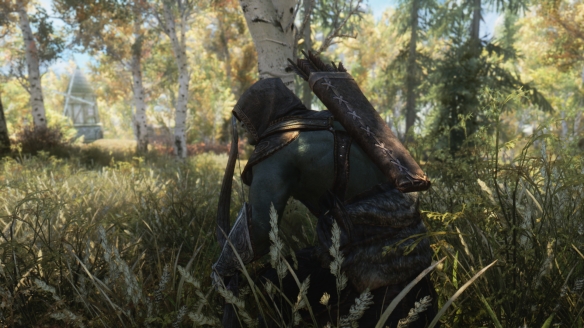sto·ry [stawr-ee, stohr-ee]
1. The plot or succession of incidents of a novel, poem, drama, etc.=
2. A narration of an incident or a series of events or an example of these that is or may be narrated, as an anecdote, joke, etc.con·text [kon-tekst]
1. The parts of a written or spoken statement that precede or follow a specific word or passage, usually influencing its meaning or effect: You have misinterpreted my remark because you took it out of context.
2. The set of circumstances or facts that surround a particular event, situation, etc.
Video game design is frequently split internally into the theoretically complementary disciplines of systems design and content design.
Systems design typically consists of “the numbers” part of the game, from how much damage a player or enemy can inflict or take, what the moment-to-moment combat feel of the game is all the way to the experience or power progression curves that govern how a player evolves through the game at the numbers level. It usually covers player progression, mobs, abilities, items and ancillary systems such as crafting and mini-games.
Content design consists of “the story” part of the game, including not only the obvious like lore and mission or quest text, but also environmental layout, placement of non-player contacts and story arc.
The distinction is, of course, somewhat artificial, and there’s a lot of crossover, but it is a (usually) effective functional distinction for the benefit of the development process. It is not uncommon for designers to go back and forth between the disciplines as well – I have spent extensive time doing both over the course of my own career, and while not the most common case, it’s not particularly unusual.
One of the complications particular to the content design side of the fence, however, is the difference between story and context.
Content is frequently conflated with the “walls of text” that so often accompany mission or quest acceptance – or return, or perhaps with voluminous articles of lore. The frequent criticism of these “walls of text” is that most players don’t read them (true) and that they are a waste. Therefore, since content is about “walls of text”, that means content is a necessary evil.
The truth, of course, is more nuanced.
Walls of text actually can be appropriate, but only if they serve a genuine need. For example, if a player must read it to get the clues to solve the puzzle, be assured – they’ll read it, or they won’t play the game. Will a game like this have a specific audience and scare away people who just don’t like to read? Sure, but every game has a specific audience. Moreover, the statement that “players don’t like to read” is frequently conflated with “players don’t like to read things that don’t matter to gameplay”.
Well, duh.
Video games are both an art form and an entertainment medium, and meant to be appreciated and enjoyed, but their pace is not the same as a book or a movie because of the necessary human interaction.
When developing content, thus, it is useful to explicitly identify what content – in this case, text – is supposed to do. (“Providing atmosphere” is a legitimate reason, by the way, but if that’s the sole reason for it being there, it needs to be in an optional area, or short enough that it doesn’t interrupt the flow of the game.)
Immersion is critical, however, but there are other ways of communicating this without text in a way that does not impede the pace and flow of a game. For example:
- Ambient audio.
- Voice overs.
- Cut-scenes that establish the layout of an environment.
- Enemy tactics that reinforce what the enemy is – Stealthy? Physically powerful?
- Visual effects such as fog, mist or fumes.
- Props. For example, you walk into an abandoned house in Fallout and see a skeleton in a bathtub with an empty bottle of whisky on the floor.
- Environment laid out in an unusual way. For example, a ship on its side in the middle of desert. A hole is in the side of it, and inside is a tent camp.
The relevance of interactions with non-player characters can also heavily impact this in subtle ways:
If the only characters the player interacts with are ones they are also fighting, that sets a tone that might be exactly what you want, say for a first person shooter game. If the player interacts with characters who give them quests, then the player may start to feel like an errand boy. If the characters a player interacts with always go, “Holy crap, it’s you!” it will make them feel like an important part of the story – which maybe is what you want, maybe not. Maybe you want the player to feel small so it makes the world feel big – for a game focused on exploration, this might actually be exactly what you want.
Story can thus be explicit or implicit; story written and spelled out like a novel or a movie is explicit storytelling; implicit storytelling is the skeleton in the bathtub.
There are places where explicit storytelling is absolutely appropriate in content game design, though it’s true, it’s often abused in this capacity.
Implicit storytelling, on the other hand, is all about context. Environmental context, non-player character context, and player context. The prop on the ground tells the player something, as does the pace of the game or the player’s evolving expectations as they move through the game.
As with so much, it’s not a simple question of “this is better than that”, it’s a question of using the right tool for the right situation to accomplish the vision for the specific game under development.

